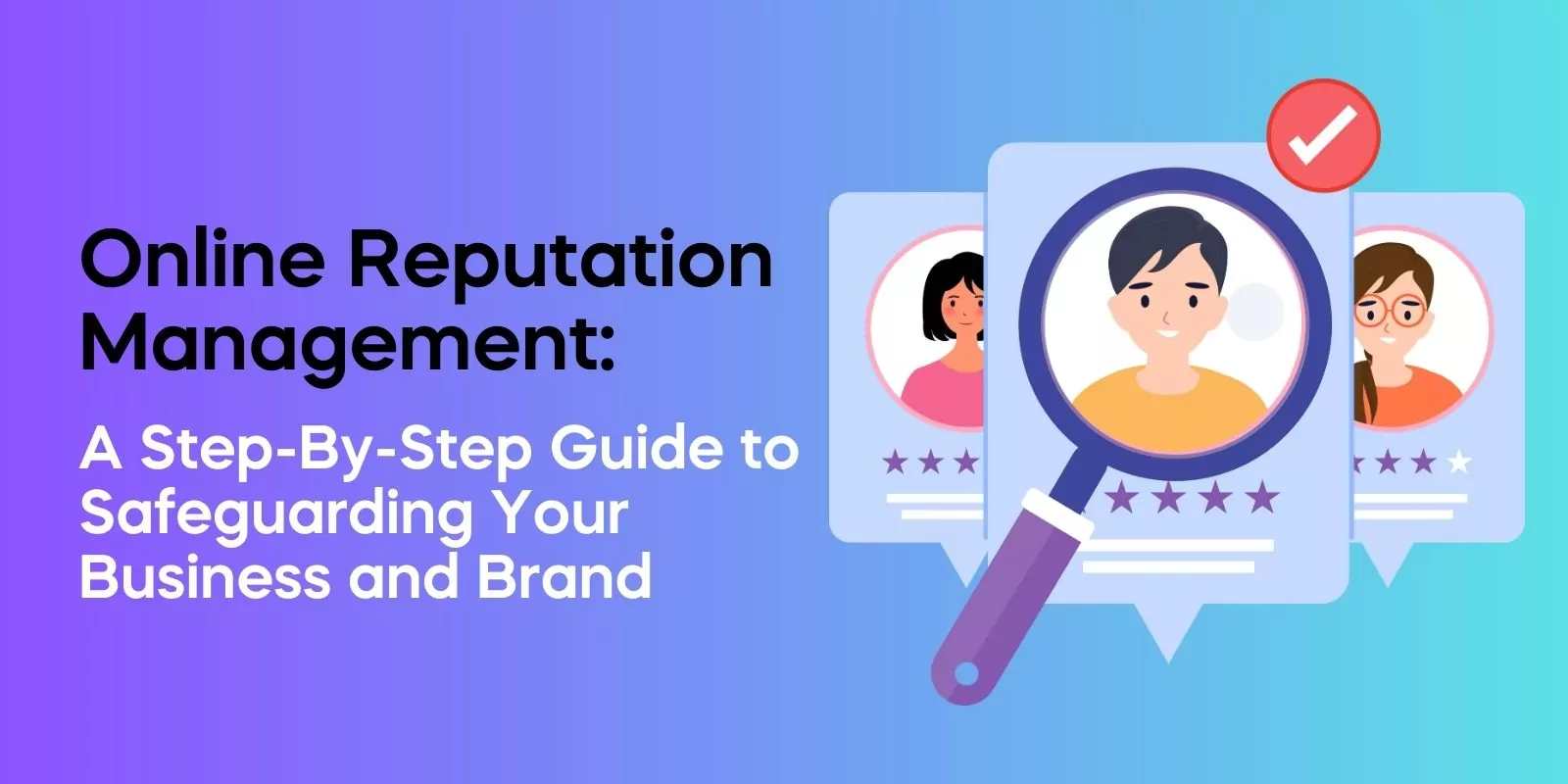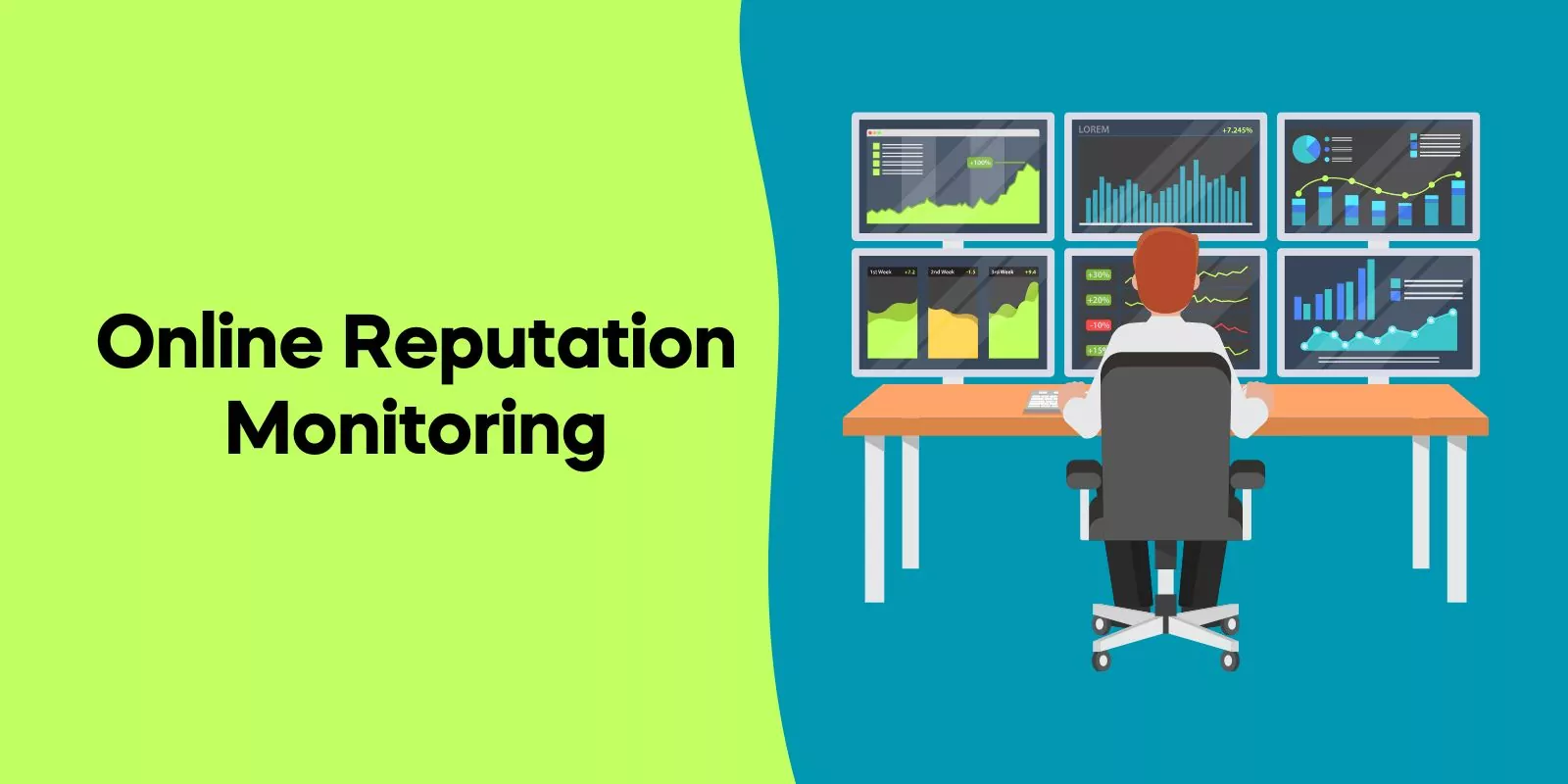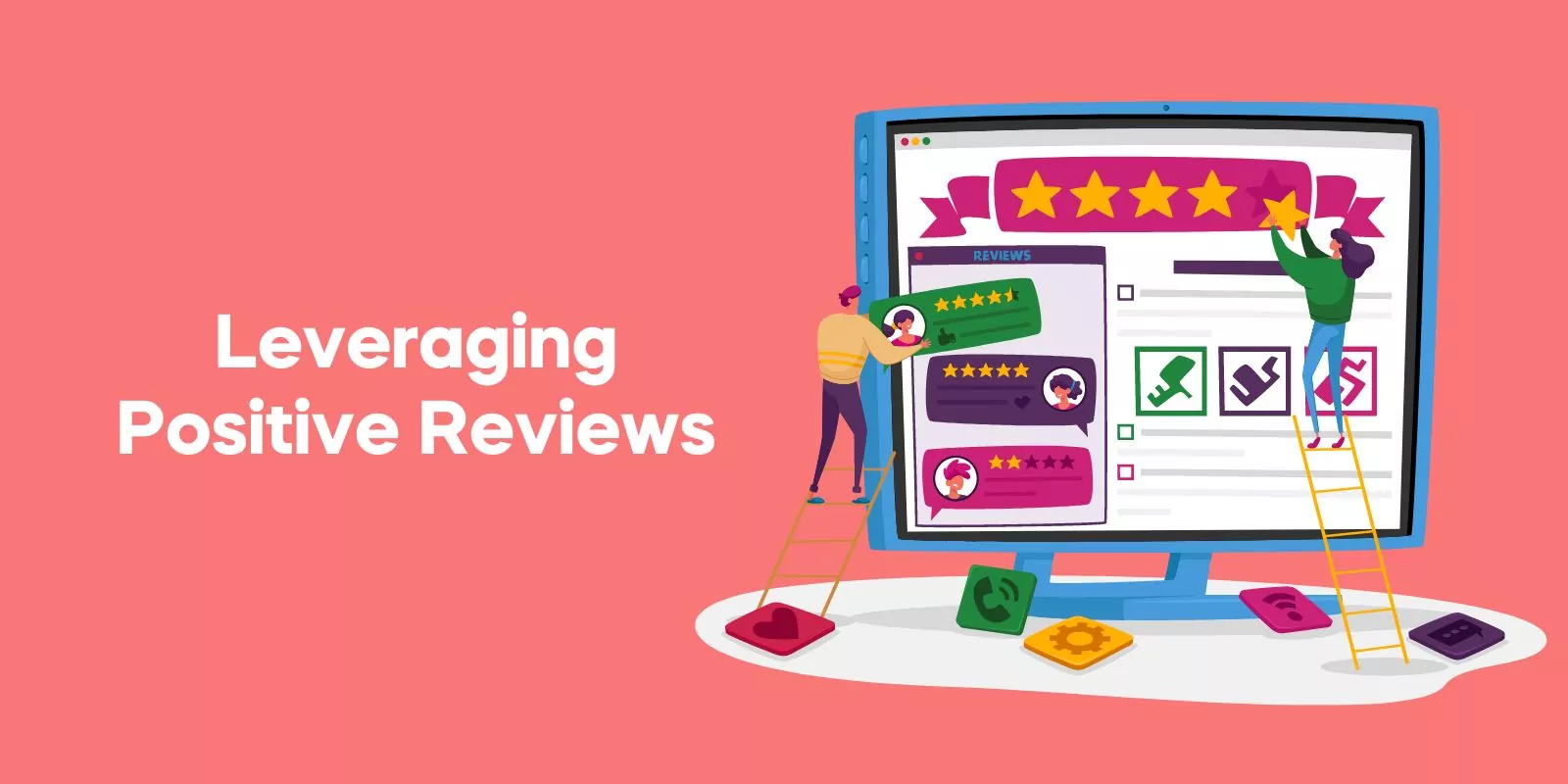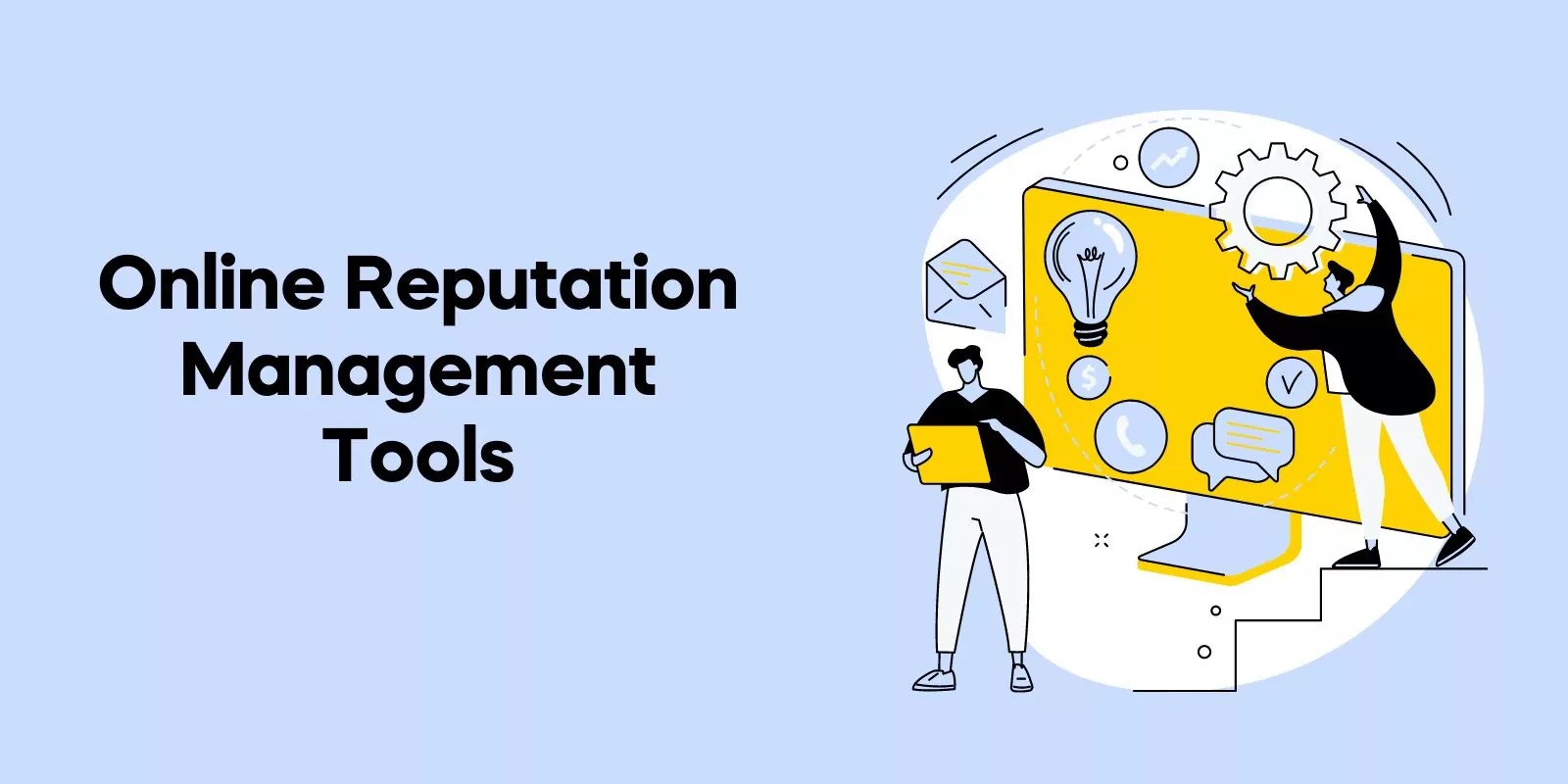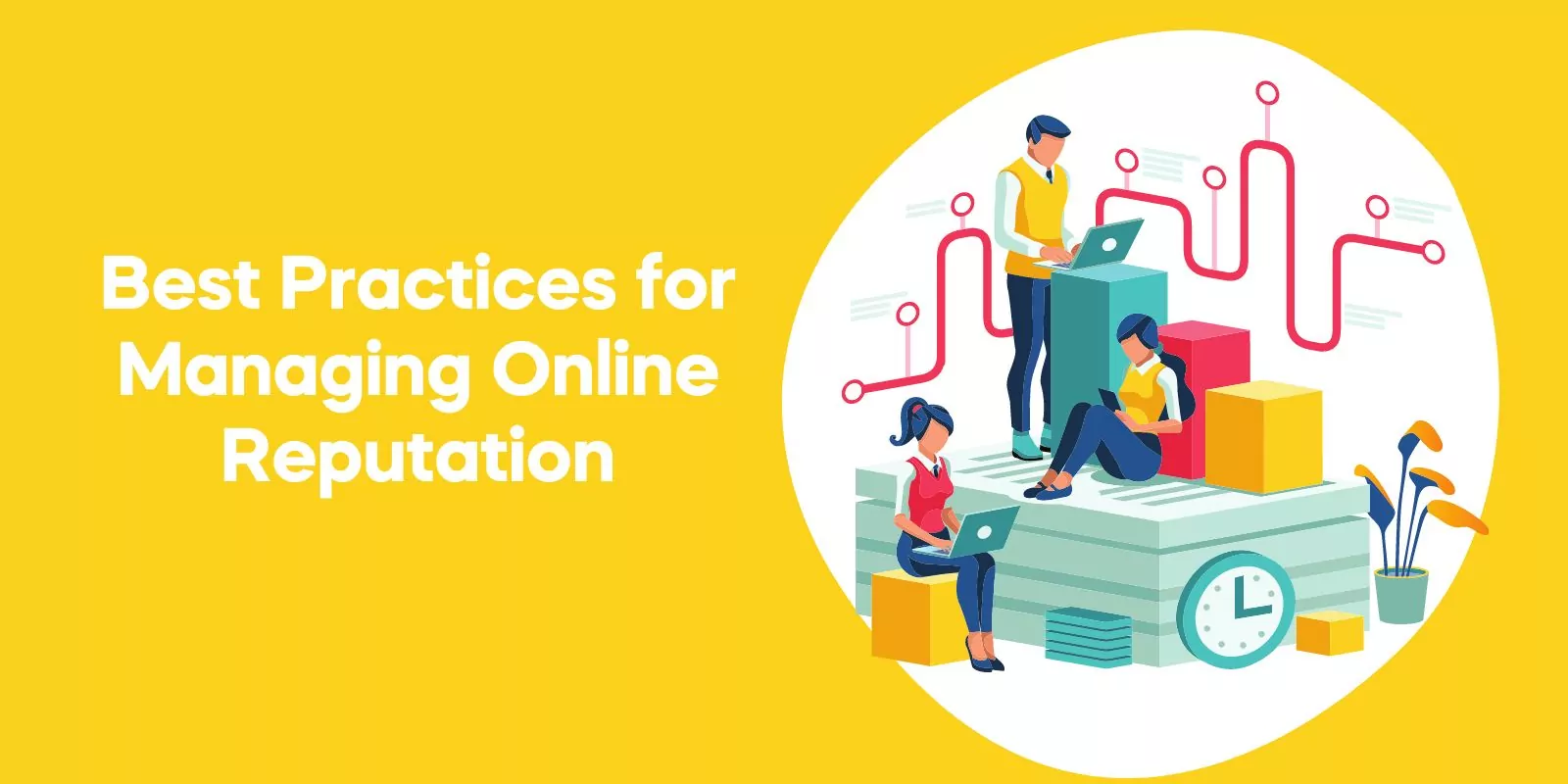Online Reputation Management, or ORM as we’ll call it, is all about controlling and managing how your brand is perceived online.
Now, you might be thinking, “I’ve got a solid brand, great products, and stellar customer service. Why do I need ORM?”
Well, guess what? According to a study by BrightLocal, 87% of consumers read online reviews for local businesses in 2020, up from just 81% in 2019. That’s a huge number of potential customers who are judging your business based on its online reputation.
So, whether you’re a small business owner or a big corporation, ORM is something you can’t afford to ignore. But, what does ORM entail? It’s more than just managing reviews and ratings (although that’s a big part of it!).
It’s about creating a positive online presence, promptly addressing any negative feedback, and continually monitoring your online image to keep your business or brand in the best light possible.
But don’t just take my word for it. Let’s hear from an industry expert.
According to Hersh Davis-Nitzberg, founder of one of the top-rated reputation management firms, “Reputation management is crucial for businesses to establish and maintain a positive brand image online. Negative reviews, misleading comments, and rumors can ruin the reputation of a business. Online Reputation Management ensures that a business gets a fair chance to redeem its image and build a strong relationship with its customers”.
Now, you might be wondering, “How does ORM work? How can I improve my brand’s online reputation?” Don’t worry, I’ve got you covered!
Throughout this comprehensive guide, we’ll explore various aspects of ORM, from understanding your current online reputation to managing customer reviews, and even handling a reputation crisis.
So stick with me, and by the end of this post, you’ll be well on your way to mastering ORM.
Understanding Your Current Online Reputation
The journey to effective online reputation management begins with understanding where you currently stand. Here’s how to do just that.
Conduct an Online Reputation Audit
An online reputation audit is the process of collecting and analyzing every mention of your brand online. This helps you understand your online reputation as it currently stands. This includes what’s being said about your business on search engines, social media platforms, and review websites.
The three key steps to conduct an online reputation audit are:
- Google Yourself: This is the easiest way to understand what online searchers see when they look for your business. It’s a simple yet effective way to get a quick snapshot of your online reputation.
- Monitor Social Media Mentions: Monitoring social media mentions can help you gauge the public sentiment about your brand on platforms like Twitter, Instagram, or Facebook. Remember, these platforms provide real-time feedback from your customers.
- Check Online Reviews: Online reviews are a critical part of your online reputation. Sites like Yelp, Google Reviews, and Trustpilot can offer insights into your customers’ experiences with your brand.
Actionable Insights:
- Use incognito mode when Googling your brand. This ensures your search results aren’t influenced by your browsing history and gives you a more accurate view of what others see when they search for your brand.
- Utilize social media monitoring tools. Tools like Hootsuite or Sprout Social can help you monitor brand mentions across various social media platforms.
- Don’t ignore negative reviews. Instead, view them as opportunities for improvement. Responding to negative reviews shows you’re committed to addressing issues and improving your service.
- Celebrate positive reviews. Share them on your social media pages and thank customers for their feedback. This not only boosts your brand’s online reputation but also encourages more positive reviews.
- Keep a record of your findings. This will help you measure the impact of your ORM efforts over time.
Award-Winning
Sales Funnel & Website Expert
Ready for Revenue – Not Just “Traffic”?
- Websites that Work: Clean, fast, built to convert – no design fluff.
- Funnels that Sell for You: Step-by-step paths that turn clicks into paying customers.
- SEO That Hunts Buyers: Show up exactly when prospects reach for their wallets.
Excellent5-star rating over 700 reviews
Set Up a System for Monitoring Your Online Reputation
Once you’ve conducted an audit and know where your online reputation stands, it’s important to keep monitoring it. Here’s how.
Online Reputation Monitoring
Keeping tabs on your online reputation is an ongoing process. Changes can occur rapidly, and you need to be ready to respond. Here’s how you can stay on top of it:
Set Up Google Alerts: Google Alerts is a useful tool that sends you emails whenever your brand is mentioned online.
- Monitor Your Social Media Platforms: Regularly check your social media accounts to stay aware of what’s being said about your brand.
- Keep an Eye on Review Sites: Online reviews can significantly influence your brand’s online reputation. Regular monitoring can help you address any negative reviews and highlight positive ones.
Actionable Insights:
- Create a Google Alert for your brand. This will keep you updated on any new mentions of your brand online.
- Schedule regular times for social media monitoring. Whether it’s daily or weekly, consistently checking your social media accounts will help you stay on top of any mentions or comments.
- Make use of ORM tools. There are several tools available, such as ReviewTrackers or Reputation.com, that can help streamline the monitoring process.
- Respond promptly to any mentions or reviews. Quick responses show that you’re attentive and care about your customers’ experiences.
- Regularly reassess your monitoring strategy. As your brand grows and changes, your ORM strategy should evolve too. Regular reassessments ensure your strategy is always aligned with your brand’s needs.
Responding to Negative Reviews
Negative reviews can hurt, but they’re not the end of the world. In fact, how you respond to these reviews can actually strengthen your brand’s online reputation.
Handling Negative Reviews
Negative reviews can be challenging to deal with, but they provide a unique opportunity to show your brand’s dedication to customer satisfaction. Here’s how to manage them effectively:
- Always Respond: Ignoring negative reviews won’t make them disappear. Instead, take the time to respond and show you’re committed to addressing the issue.
- Be Professional: It’s important to stay professional in your responses. Apologize for the customer’s negative experience and offer a solution if possible.
- Take the Conversation Offline: If the issue is complex or sensitive, it may be best to take the conversation offline. Ask the reviewer to contact you directly to resolve the issue.
Actionable Insights:
- Craft a standard response template. While each response should be tailored to the specific issue, a template can help you respond quickly and maintain a consistent tone.
- Avoid getting defensive. It’s easy to feel attacked by negative reviews, but remember, they’re about a specific experience, not about you personally.
- Use negative reviews to improve. See them as constructive feedback and use them to identify areas for improvement.
- Highlight resolved issues. If a negative review has been addressed and resolved, it’s okay to ask the customer to update their review reflecting this.
- Train your team. Ensure everyone who responds to reviews understands your brand’s values and communication style.
Leveraging Positive Reviews
While negative reviews get a lot of attention in ORM, positive reviews are just as important. They can significantly boost your online reputation and should be leveraged effectively.
Promoting Positive Reviews
Positive reviews provide social proof, which can help you attract more customers. Here’s how to make the most of them:
- Thank Your Reviewers: Show appreciation for positive reviews by responding with a thank you message. This encourages more positive feedback.
- Share Positive Reviews: Don’t keep positive reviews hidden on review sites. Share them on your website and social media platforms to amplify their impact.
- Encourage More Reviews: Happy customers are often willing to leave reviews, but sometimes they need a little encouragement. Don’t be shy to ask for reviews!
Actionable Insights:
- Ask for reviews at the right time. The best time to ask for a review is after providing a positive experience. This could be after a purchase or a successful customer service interaction.
- Make it easy to leave reviews. Provide clear instructions on how to leave a review and consider offering incentives to encourage them.
- Use positive reviews in marketing materials. They’re a great way to build trust and provide social proof.
- Feature reviews prominently on your website. This could be on your homepage or a dedicated testimonials page.
- Regularly update shared reviews. This shows that you consistently provide excellent experiences.
Building a Positive Online Reputation
Maintaining a positive online reputation goes beyond managing reviews. It involves building a positive brand image online. Here’s how to do just that.
Enhancing Your Brand’s Online Image
From your website to your social media accounts, every online touchpoint contributes to your online reputation. Here’s how to enhance your brand’s online image:
- Create Quality Content: High-quality content not only boosts your SEO but also helps to build a positive online reputation. This could be blog posts, videos, or social media content.
- Engage with Your Audience: Regular engagement with your audience on social media platforms shows that your brand is approachable and cares about its customers.
- Be Consistent: Consistency in your messaging and visual branding across all platforms helps to build trust and recognition.
Actionable Insights:
- Develop a content strategy. Plan your content in advance to ensure it aligns with your brand’s message and goals. Regularly posting high-quality content can help improve your online reputation.
- Stay active on social media. Regular posts and interactions can help keep your brand at the forefront of your audience’s mind.
- Monitor your online image. Use online reputation management tools to keep track of what’s being said about your brand online.
- Respond promptly. Whether it’s a comment, a review, or a direct message, try to respond promptly. This shows that you value your customers’ input and feedback.
- Ensure your visual branding is consistent. Use the same logos, colors, and styles across all platforms to create a cohesive brand image.
Using Online Reputation Management Tools
There are several online reputation management tools available that can help monitor and manage your online reputation. Let’s explore how to use these tools effectively.
Implementing ORM Tools
Online reputation management tools can automate the process of monitoring and managing your online reputation. Here’s how to implement them:
- Choose the Right Tool: Different tools offer different features. Some focus on review management, while others offer comprehensive social media monitoring.
- Set Up Alerts: Most ORM tools allow you to set up alerts for brand mentions. This way, you’re notified immediately when someone mentions your brand online.
- Use the Analysis Features: Many ORM tools offer analysis features that can provide insights into your online reputation.
Actionable Insights:
- Research before choosing a tool. Make sure the tool you choose fits your specific needs and budget.
- Take advantage of free trials. Most tools offer free trials. Use this time to explore the tool’s features and see if it’s a good fit for your business.
- Train your team on the tool. Make sure everyone who will be using the tool is properly trained to maximize its benefits.
- Regularly review the tool’s insights. These insights can help you understand the state of your online reputation and guide your ORM strategy.
- Combine tools if needed. You might find that no single tool meets all your needs. Don’t be afraid to use multiple tools to cover all aspects of ORM.
Keeping Up with ORM Trends
The online landscape is constantly changing, and so are best practices for online reputation management. Let’s discuss how to stay up-to-date with the latest ORM trends.
Staying Informed About ORM
Staying informed about the latest ORM trends and best practices can help you maintain a positive online reputation. Here’s how to do that:
- Follow Industry Experts: Many industry experts share their insights and predictions on social media and their blogs.
- Attend Conferences and Webinars: These can be great opportunities to learn about the latest trends and network with other professionals.
- Read Industry Publications: Many online publications are dedicated to ORM and regularly publish articles on the latest trends and best practices.
Actionable Insights:
- Create a list of industry experts to follow. Regularly check their content for insights and advice.
- Schedule time for learning. Dedicate some time each week to reading about ORM and learning new strategies.
- Subscribe to industry newsletters. This is an easy way to stay updated on the latest news and trends.
- Consider taking a course. There are many online courses available that can help you deepen your understanding of ORM.
- Join industry forums and groups. These can be great places to share ideas and learn from other professionals.
Best Practices for Managing Online Reputation
Now that we’ve covered the basics of ORM, let’s dive into some best practices. These tips will help you manage your online reputation effectively and proactively.
Proactive Reputation Management
Proactive ORM involves taking steps to build a positive online reputation before any potential issues arise. Here’s how to do it:
- Encourage Customer Reviews: Positive reviews can significantly improve your online reputation. Encourage satisfied customers to leave reviews on major review sites.
- Monitor Your Brand Mentions: Regularly monitor what’s being said about your brand online so you can address any potential issues promptly.
- Create a Positive Online Presence: Regularly post positive, high-quality content on your website and social media platforms to build a positive online image.
Actionable Insights:
- Implement a review management system. This could involve assigning a team member to monitor and respond to reviews, or using an ORM tool to automate the process.
- Use social listening tools. These tools can help you monitor brand mentions across the web, so you can respond promptly to both positive and negative feedback.
- Develop a content strategy. Regularly posting high-quality content can help build a positive online image.
- Engage with your audience. Responding promptly and professionally to comments and messages can help build a positive online reputation.
- Regularly evaluate your ORM strategy. As your business and the online landscape evolve, your ORM strategy should too. Regularly review and adjust your strategy as needed.
How to Recover from a Reputation Crisis
No matter how carefully you manage your online reputation, crises can still occur. Let’s discuss how to recover when they do.
Managing a Reputation Crisis
A reputation crisis can significantly harm your online reputation, but with the right response, it’s possible to recover. Here’s how:
- Acknowledge the Issue: Ignoring the problem won’t make it go away. Acknowledge the issue publicly and explain what steps you’re taking to address it.
- Communicate Openly: Keep your audience updated on your progress. This helps to rebuild trust and shows your commitment to resolving the issue.
- Learn from the Crisis: Once the crisis is resolved, take the time to understand what went wrong and how you can prevent similar issues in the future.
Actionable Insights:
- Have a crisis management plan in place. This plan should outline the steps to take in the event of a reputation crisis.
- Train your team. Make sure your team knows how to respond to a crisis in a way that aligns with your brand’s values.
- Apologize sincerely. If your company made a mistake, apologize sincerely and openly. This can help rebuild trust.
- Use the crisis as a learning opportunity. Once the crisis is resolved, use it as an opportunity to improve your products or services.
- Follow up. After a crisis, it’s important to follow up with your audience and update them on the changes you’ve made.
The Role of SEO in ORM
Search engine optimization (SEO) plays a crucial role in ORM. It can help ensure that positive content about your brand ranks high in search engine results, while negative content is pushed down. Let’s explore this in more detail.
Leveraging SEO for ORM
SEO can be a powerful tool in your ORM arsenal. Here’s how to use it effectively:
- Create High-Quality Content: Content that is useful, relevant, and engaging is more likely to rank high in search engine results.
- Optimize Your Content: Use SEO best practices, like including relevant keywords and using meta tags, to help your content rank higher.
- Build Quality Backlinks: Backlinks from reputable sites can improve your site’s search engine ranking.
Actionable Insights:
- Invest in SEO tools. SEO tools can help you find relevant keywords, optimize your content, and track your rankings.
- Regularly update your content. Search engines favor fresh, up-to-date content.
- Create a diverse content portfolio. Having a mix of content types, like blog posts, videos, and infographics, can improve your SEO.
- Engage with your audience. Engagement, like comments and shares, can boost your SEO.
- Monitor your SEO performance. Regularly check your rankings and make adjustments as needed.
Frequently Asked Questions
What is online reputation management?
Online Reputation Management, often abbreviated as ORM, is the practice of shaping public perception of a person, organization, or product on the internet. It involves monitoring and influencing the digital footprint and online sentiment associated with a brand.
This is achieved through a combination of techniques, including monitoring online conversations, addressing negative or misleading content, and promoting positive and accurate information.
What are best practices for managing online reputation?
Managing online reputation effectively involves a series of best practices, such as:
- Be proactive: Rather than waiting for a reputation crisis, take a proactive stance by actively promoting positive content and continuously monitoring your online presence.
- Monitor online conversations: Use social listening tools to keep track of what’s being said about your brand on different digital platforms.
- Engage with your audience: Regularly interacting with your customers and the public can build positive relationships and mitigate negative sentiment.
- Address negative content promptly and professionally: If negative or inaccurate content does arise, address it in a timely, professional manner. Ignoring it won’t make it go away.
- Encourage positive reviews and testimonials: Customer reviews can significantly impact a brand’s reputation. Encourage satisfied customers to leave positive reviews.
What are the four 4 tips to manage online reputation easily?
- Set up alerts: Services like Google Alerts can help you stay informed about new online mentions of your brand.
- Create high-quality, positive content: A consistent stream of positive content can boost your brand’s reputation and counteract any negative content.
- Address issues promptly: Don’t ignore negative feedback or reviews. Instead, address them promptly and professionally, showing that you care about your customers’ experiences.
- Maintain a strong social media presence: Active, well-managed social media accounts can contribute positively to your online reputation and provide platforms for direct engagement with your audience.
What is online reputation management in social media marketing?
In the context of social media marketing, online reputation management involves monitoring and managing your brand’s image across social media platforms. This includes tracking mentions of your brand, responding to comments (both positive and negative), managing customer complaints, promoting positive content, and participating in relevant conversations. Essentially, it’s about ensuring your brand is presented positively and authentically on social media.
Is online reputation management the same as SEO?
While both online reputation management and SEO (Search Engine Optimization) involve influencing how your brand is perceived online, they are not the same. SEO primarily focuses on optimizing a website to improve its visibility in search engine results, with the goal of increasing organic traffic.
On the other hand, ORM involves a broader scope of activities aimed at controlling online perception of a brand across all digital platforms, including search results, social media, review sites, and more. That said, SEO techniques are often used in ORM strategies, as managing how your brand appears in search results is a crucial part of managing your online reputation.
What are the benefits of online reputation management?
Online reputation management offers several benefits:
- Improved public perception: By actively managing your online reputation, you can shape the narrative surrounding your brand and ensure the public sees a positive image.
- Increased trust and credibility: Brands with a positive online reputation are perceived as more trustworthy and credible, which can help attract and retain customers.
- Higher revenues: Positive online reputation can drive higher customer acquisition and retention rates, resulting in increased sales and revenues.
- Crisis management: ORM helps you monitor for and respond to potential reputation crises, mitigating any damage before it can seriously impact your brand.
- Better search engine ranking: Positive online content and reviews can boost your SEO, leading to improved search engine rankings and visibility.
Conclusion
Online reputation management is more than just responding to reviews. It’s a proactive and ongoing process that involves building a positive online image, monitoring what’s being said about your brand, and responding appropriately to both praise and criticism.
Remember, your online reputation can significantly impact your business. A positive online reputation can attract new customers, increase customer loyalty, and ultimately boost your bottom line. Conversely, a poor online reputation can drive away potential customers and harm your business.
With the right strategies and tools, you can manage your online reputation effectively. This includes encouraging positive reviews, responding appropriately to negative reviews, creating high-quality content, engaging with your audience, and staying informed about the latest ORM trends.
Don’t forget the role of SEO in ORM. By optimizing your content and using SEO best practices, you can ensure that positive content about your brand ranks high in search engine results.
Whether you’re just getting started with ORM or looking to improve your existing strategy, I hope this guide has provided you with valuable insights and actionable tips. Remember, ORM is an ongoing process.
Keep refining your strategies, stay responsive to your audience’s feedback, and always strive for improvement. Your online reputation is worth it!
In the end, if you’re not shaping your online reputation, who is? So, take control, stay vigilant, and keep building a positive online image for your brand.
And remember, the Internet never forgets. But with effective ORM, you can ensure it remembers you favorably.
